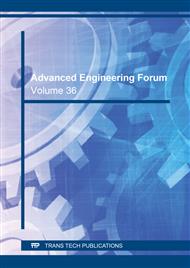p.13
p.23
p.28
p.47
p.59
p.76
p.97
p.114
p.126
Room Temperature Creep of a Tin-Lead Solder Wire under Self-Weight
Abstract:
Creep tests using a simple jig have been performed on 63 wt.% tin-37 wt.% lead solder wires of diameters 1 mm and 2 mm at room temperature (23°C). Coils containing 5 or 10 rings were allowed to creep under their own weight for 60 minutes. It was noted that for either of these diameter wires, the coil with 10 rings had significantly large vertical displacements as compared to those with 5 rings. In each particular coil, the highest vertical displacements were in the bottom rings. The overall maximum vertical displacement was 76.5 mm and this was in a bottom ring of the 2 mm diameter wire with 10 rings. However, in all cases, the amount of horizontal displacement was negligible. The bottom ring of the 2 mm diameter wire had the largest initial strain of 0.151 at 5 minutes and final strain of 0.546 at 60 minutes; this was in the coil with 10 rings. Although no consistent pattern in change between the initial and final diameters was noted for the rings in any coil even after 24 hours of creep, it was quite apparent that in a majority of cases a change in diameter occurred. The main factor responsible for the observed creep is attributed to the weight of the rings in the coils rather than capillary flow.
Info:
Periodical:
Pages:
76-96
Citation:
Online since:
June 2020
Authors:
Keywords:
Price:
Сopyright:
© 2020 Trans Tech Publications Ltd. All Rights Reserved
Share:
Citation:


